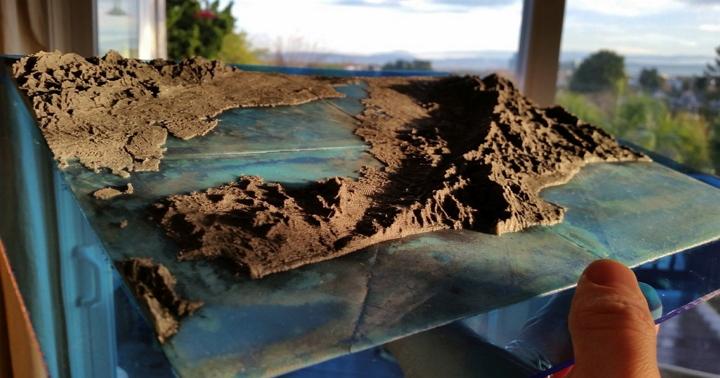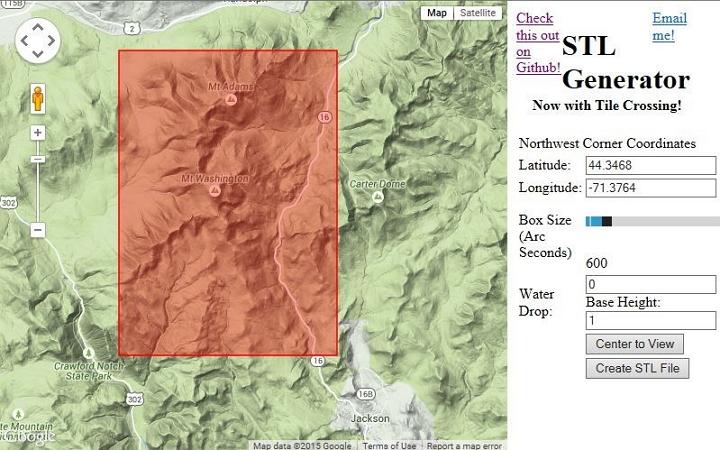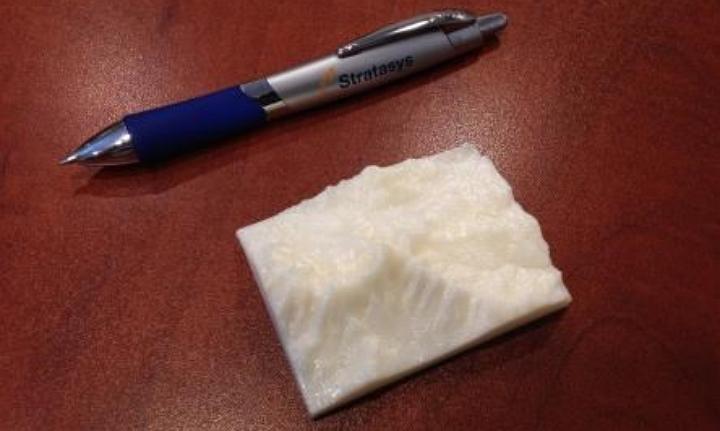 With their blend of art, science and implied adventure, maps have a way of pulling us in to their depiction of the details which make up our world.
With their blend of art, science and implied adventure, maps have a way of pulling us in to their depiction of the details which make up our world.
And perhaps the most appealing of them, modern topographic maps, fascinate with their large-scale detail and representation of relief through contour lines. Traditionally, topographic maps show both natural and man-made features and they’re typically published with contour lines – lines which connect spots of equal elevation. From “chorographic maps” to “planimetric maps,” topographic maps are at the top of the heap, and the study of topography is a broad field which can take into account all natural and man-made features of a given terrain.
Now R&D Technologies, Inc. a New England reseller of the Stratasys line of 3D printers which also operates a fully equipped service bureau with in-house technology for 3D prototyping, has found an .STL file generator for exporting 3D data from Google Earth. Chris Richter, a Customer Support Manager and Application Engineer with R&D Technologies, wondered if there was a relatively simple way to print topographic terrain similar to topographic maps.
“After some searching on the web, it seems there is not an easy or straightforward path to accomplish this. I came across a tutorial on Youtube which shows how to import GoogleMap data in to Google Sketch-Up and then export the data for importing into Rhino,” he says. “Since I do not have access to Rhino, this solution was a dead end.”
But not to be deterred, Richter then did some experiments where he imported that Google SketchUp data into Meshlab, the free mesh editing utility. While that method did work on occasion, he was still not impressed with the consistency of the results…and then he stumbled on an ideal solution.
He found a very cool site by developer Thatcher Chamberlain called “Terrain2Stl,” and that did the trick. As we saw back in November, this STL Generator is pretty impressive.
Chamberlain’s site allows a user to position a bounding box around the area of a map they wish to capture. The box area can be defined by features of the site, and simply clicking a “Create STL File” button generates what is generally an error free .STL file.
Richter says that aside from areas such as the Grand Canyon, the models work well.
“Most mountain ranges I have tested seem to work well, although I noticed the Z scaling needed to be decreased by about .78 to create a realistic model,” Richter says. “I was able to create an STL file of Mount Washington which is located in New Hampshire and I then 3D printed the file on a uPrintSE Plus.”
He printed out a 2” X 3” example, and it looks mighty interesting indeed.
Subscribe to Our Email Newsletter
Stay up-to-date on all the latest news from the 3D printing industry and receive information and offers from third party vendors.
You May Also Like
UpNano Launches 2PP 3D Printing Service with New NanoPro VT Printer
UpNano, an Austrian company specializing in two-photon polymerization (2PP) additive manufacturing (AM), has launched a service bureau that will offer high-volume output of microscale parts. The new service, NanoPro, will...
Materialise Updates Magics and Partners with BLT at Formnext 2024
At this year’s Formnext, 3D printing software and services pioneer Materialise, unveiled a series of software updates designed to enhance customization capabilities in 3D printing for its users. The announcement...
HP’s New Materials, Tools, and Collaborations to Drive 3D Printing Forward at Formnext 2024
At Formnext 2024, HP unveiled several key developments aimed at advancing additive manufacturing (AM), with new materials, workflow optimization tools, and expanded metal printing capabilities. These announcements reinforce HP’s strategy...
Farsoon at Formnext: What’s New in 3D Printing for 2024
With Formnext 2024 underway in Frankfurt, Farsoon Technologies (SHA: 688433) is showcasing a series of developments unveiled in the lead-up to the event. From advancing food-safe 3D printing for the...





































